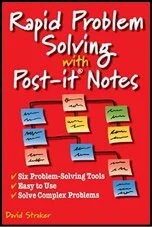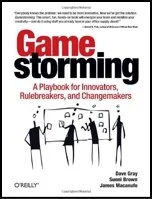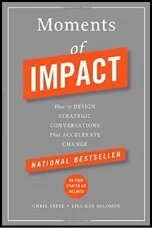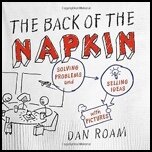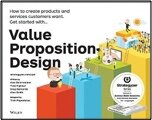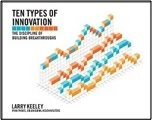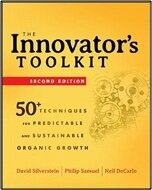Books to improve UX, strategy, and design thinking workshops
As a huge fan of using workshops for discovery, I've taught how to plan and facilitate workshops to scores of user experience practitioners and business analysts in Avanade's Digital group. During this time, I've realized collaborative working sessions can feel like an alien world.
The following books help shift your design practice to working more collaboratively with both your team and your clients.
Core books, required reading
The Art of Gathering: How We Meet and Why It Matters
By Priya Parker
Mind blowing. I’ve been running workshops since about 2005, so I didn’t expect to learn that much. I was so cynical, so wrong. Parker deconstructs why we gather, where , and how in a way that’s easily accessible and immediately applicable. As I finished each chapter, I found myself questioning assumptions and common routines that have guided my practice for ages. And then I went and rethought birthdays, dinner parties, dinner… You have to read this book. It tears everything down and shows you how to rebuild, so your workshops are perfectly optimized and outcome-oriented.–Planning, Facilitation, Remote
Rapid problem solving with Post-It Notes
By David Straker
Although the title mentions sticky notes, Straker walks you through archetypal problems and activities for solving them. Using sticky notes as a conceit, he shows you what to focus on, how to run activities, and offers tips and tricks for troubleshooting, as well. And of course, rapid problem solving with Post-it notes might as well be be a synonym for collaborative workshops.–Facilitation
Collaborative product design
By Austin Govella
I don’t want to be that guy, but I specifically wrote this book to help teams with diverse levels of experience and backgrounds collaborate better. Collaborative Product Design collects 11 practical tools and hundreds of tips from the trenches that help teams collaborate on strategy, user research, and UX, ideally suited for agile teams and lean organizations. It provides flexible framing for core methods and offers specific guidance for running remote workshops.–Planning, Facilitation, Activities, Remote
Game storming: A playbook for innovators, rulebreakers, and changemakers
By Dave Gray, Sunni Brown, and James Macanufo
Chapters 1 and 2 contains the best description for how to structure a workshop. Because of my personal style, I find the majority of the activities in the book less useful as recipes to follow. (They may resonate 100% with you.) However, the activities show how to design activities for specific outcomes, as well as the range of possible activities you can guide participants into doing, from serious to playful.–Planning, Facilitation, Activities
Moments of impact: How to design strategic conversations that accelerate change
By Chris Ertel and Lisa Kay Solomon
Although Ertel and Solomon focus Moments of Impact on conversations about strategy, their thoughtful, step-by-step approach to planning, framing, and facilitating workshops applies to any type of workshop (engage multiple perspectives, frame the issues, set the scene, make it an experience). Once you understand all design conversations are strategic conversations, you shift from tactical, project-focused workshops to workshops move your client towards the world they want to live in.–Planning, Facilitation
The back of the napkin: Solving problems and selling ideas with pictures
By Dan Roam
Often, workshops require you capture a wide range of information in a visual format. Roam's handy guide explores the best ways to capture different types of information. This includes how to recognize what is what and how to best represent it visually. Like Rapid Problem Solving With Post-It Notes, Roam's book provides a mental toolbox you will reach for again and again.–Facilitation
Books to change how you think
Value proposition design: How to create products and services customers want
By Alexander Osterwalder, Yves Pigneur, Gregory Bernarda, Alan Smith, Trish Papadakos
This book presents collaborative ways to explore business and user needs in the service of designing a value proposition. You can use this approach as-is, or use it as a starting point for crafting your own activities. Highlights include simple structures that can guide conversations as well as collections of trigger questions to start or extend discussions.
Ten types of innovation: the discipline of building breakthroughs
By Larry Keeley, Helen Walters, Ryan Pikkel, Brian Quinn
Ten Types of Innovation provides a framework for thinking about the different ways organizations can innovate. Numerous examples illustrate how different types of innovations work together to help organization's make greater or smaller leaps in the marketplace. This book helps you understand the types of questions and directions you can explore with your client to break out project thinking and start thinking more in terms of helping your client evolve.
Workshop activities
The innovator’s toolkit: 50+ techniques for predictable and sustainable organic growth
By David Silverstein, Philip Samuel, and Neil DeCarlo
Like Gamestorming, this book collects numerous techniques and activities you can run in workshops (or even as simple work exercises). Where Gamestorming approaches activities from more of a design perspective, The Innovator's Toolkit approaches from a business perspective. Like Gamestorming, the large variety shows how to construct activities to address specific questions, as well as demonstrates more of the art of the possible.
Learn more about workshops and collaboration
Collaborative Product Design collects 11 practical tools and hundreds of tips from the trenches that help teams collaborate on strategy, user research, and UX, ideally suited for agile teams and lean organizations.
Visit the book website to learn more or buy on Amazon.

